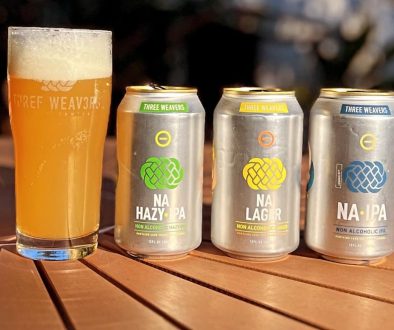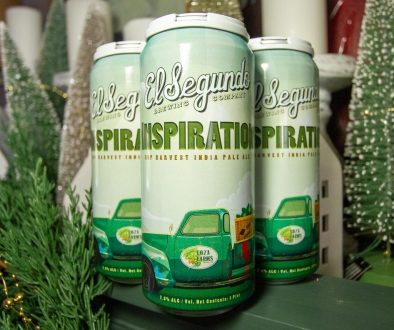What is Craft Beer? – Response to 2016 Brewers Association Top Breweries List
The Brewers Association (BA) announced their annual report on the Top 50 Craft Brewing Companies of 2016 on March 15th, 2017. It features the usual cast of characters that have been dominating the list for years: Boston Beer Co, Sierra Nevada Brewing, New Belgium Brewing, Deschutes Brewery, Stone Brewing, etc. For the third year running, the top spot was taken by Yuengling & Son with 2.7 million barrels of beer brewed (1 barrel = 31 gallons). Yuengling dethroned the reigning king of craft beer, Boston Beer Co, in 2014.
Despite Yuengling’s recent appearance on the list, it’s nearly six times older than Boston Beer Co. Two key changes were required for Yuengling to even make the list: 1st, the BA raised the maximum capacity to 6 million barrels and 2nd, they softened the traditional ingredients requirement to allow corn and rice. These two changes shot Yuengling to the top of the list.
There were several changes to the top part of the list in 2016. The #13 brewery, Firestone Walker, left the list as an independent brewery but didn’t disappear entirely. Its numbers folded into Duvel-Moortgat, its new parent company, which moved from #15 in 2015 to #6 in 2016. Duvel-Moortgat’s other American properties are Kansas City’s Boulevard Brewing and Cooperstown’s Brewery Ommegang.
There were two high ranking breweries that disappeared entirely from the list: Lagunitas Brewing (#6 in 2015) and Ballast Point Brewing (#11 in 2015). Dutch international brewing conglomerate Heineken purchased a 50% stake in Lagunitas which violates the BA’s limit of more than 25% being owned by a non-craft brewery. Ballast Point sold to drinks company Constellation Brands for a whopping $1 billion.
Another brewery that moved up the list thanks to an acquisition was Oskar Blues. They moved from #24 in 2014 to #14 the next year after acquiring Cigar City Brewing. Oscar Blues Holding Company hit #10 in 2016.
Narrangasett, the once defunct New England brewery, rode a wave of classic lager brand nostalgia in combination with a variety of craft recipes to the #36 spot in 2016, 11 years after the brand was brought back from the dead under new, independent ownership.
And while this list and the associated stats are interesting, the link attached to the bottom of the annotated Top 50 Overall Brewing Company list is far more intriguing. In past years, the notes were used to list the various brands sold by the giant beer mega corporations like AB-InBev or MolsonCoors. The 2016 list features a large list of notes attached to familiar brewery names and less familiar holding companies. Over the last few years, it’s not just AB-InBev and MolsonCoors buying craft breweries, but craft breweries buying other craft breweries.
Companies like Gambrinus, owner of Bridgeport, Shiner, and Trumer, and Artisanal Brewing Ventures, the merged entity of Victory and Southern Tier, are becoming not just rare exceptions, but the norm in today’s beer business climate. To muddy the waters even further, one of the companies listed in the US based top 50 Craft Brewing Companies is Belgian. Duvel-Moortgat, while a foreign company, is a family-owned company that owns three prominent US breweries. Boston Beer Company, in contrast, is a publicly traded company with a little over ⅓ of the stocks owned by Jim Koch, the original owner.
What is “Craft” Beer? Twenty-six percent of the Top 50 Craft Brewing Companies aren’t what would be considered a “traditional” single brewery selling their own beer. If we expand this list further to breweries with multiple facilities (like Sierra Nevada’s Chico and Asheville breweries), the list climbs to 42%. One can see why the BA is having trouble with a definition that’s concise, inclusive, and meaningful. As it stands, the current definition is only succeeding at being inclusive.
It includes a $2 billion dollar publicly traded company, a revived legacy brand that has been contract brewing for 12 years (their own facility is slated to open this year), a foreign family-owned brewery, craft breweries who own other craft breweries, adjunct-using but traditional family-owned breweries, and breweries owned by venture capitalists and investment firms. The waters of craft beer are becoming more and more murky as the segment develops. In fact, it’s probably easier to figure out what isn’t “craft” when you look at the BA definition: any brand owned by AB-InBev (including their stake in Craft Brands Alliance), MolsonCoors, Pabst, Heineken, and Constellation brands. If it’s owned by one of those entities, it’s not craft.
The BA is in a precarious position. If they tighten their definition, they risk alienating powerful money donors. If they keep the current standards or continue loosening them, they risk their relevance with brewers and consumers. Currently, they are the voice of Craft Brewing in the US, but as the segment continues to evolve, they will have to figure out how to walk the line between the traditional face of Craft Brewing and the new economic reality of modern Craft Brewing.





Brewers Association Reports Steady Growth in 2016 • thefullpint.com
March 28, 2017 @ 10:26 am
[…] READ: What is Craft Beer? – Response to 2016 Brewers Association Top Breweries List […]